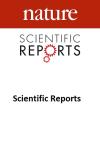Perceptual learning based on a temporal stimulus enhances visual function in adult amblyopic subjects

Studies have shown that Perceptual Learning (PL) can lead to enhancement of spatial visual functions in amblyopic subjects. Here we aimed to determine whether a simple flickering stimulus can be utilized in PL to enhance temporal function performance and whether enhancement will transfer to spatial functions in amblyopic subjects. Six adult amblyopic and six normally sighted subjects underwent an evaluation of their performance of baseline psychophysics spatial functions (Visual acuity (VA), contrast sensitivity (CS), temporal functions (critical fusion frequency (CFF) test), as well as a static and flickering stereopsis test, and an electrophysiological evaluation (VEP). The subjects then underwent 5 training sessions (on average, a total of 150 min over 2.5 weeks), which included a task similar to the CFF test using the method of constant stimuli. After completing the training sessions, subjects repeated the initial performance evaluation tasks. All amblyopic subjects showed improved temporal visual performance (CFF) in the amblyopic eye (on average, 17%, p << 0.01) following temporal PL. Generalization to spatial, spatio-temporal, and binocular tasks was also found: VA increased by 0.12 logMAR (p = 0.004), CS in backward masking significantly increased (by up to 19%, p = 0.003), and flickering stereopsis increased by 85 arcsec (p = 0.048). These results were further electrophysiologically manifested by an increase in VEP amplitude (by 43%, p = 0.03), increased Signal-to-Noise ratio (SNR) (by 39%, p = 0.024) to levels not different from normally sighted subjects, along with an improvement in inter-ocular delay (by 5.8 ms, p = 0.003). In contrast, no significant effect of training was found in the normally sighted group. These results highlight the potential of PL based on a temporal stimulus to improve the temporal and spatial visual performance in amblyopes. Future work is needed to optimize this method for clinical applications.
תאריך עדכון אחרון : 19/02/2024



